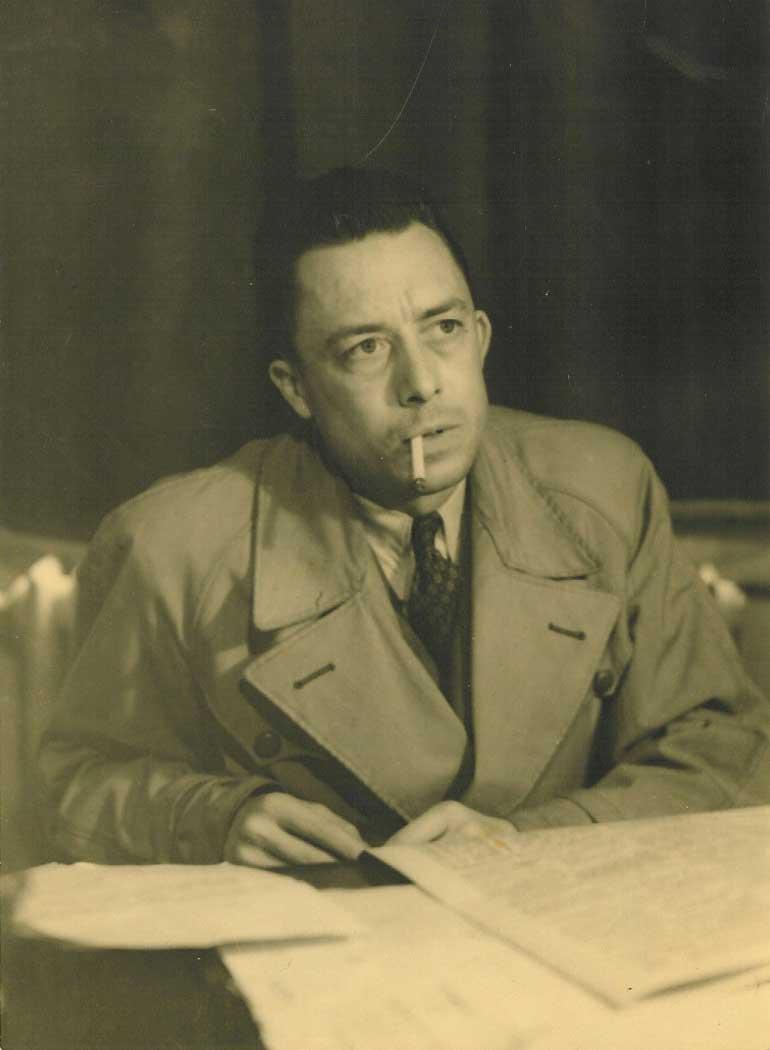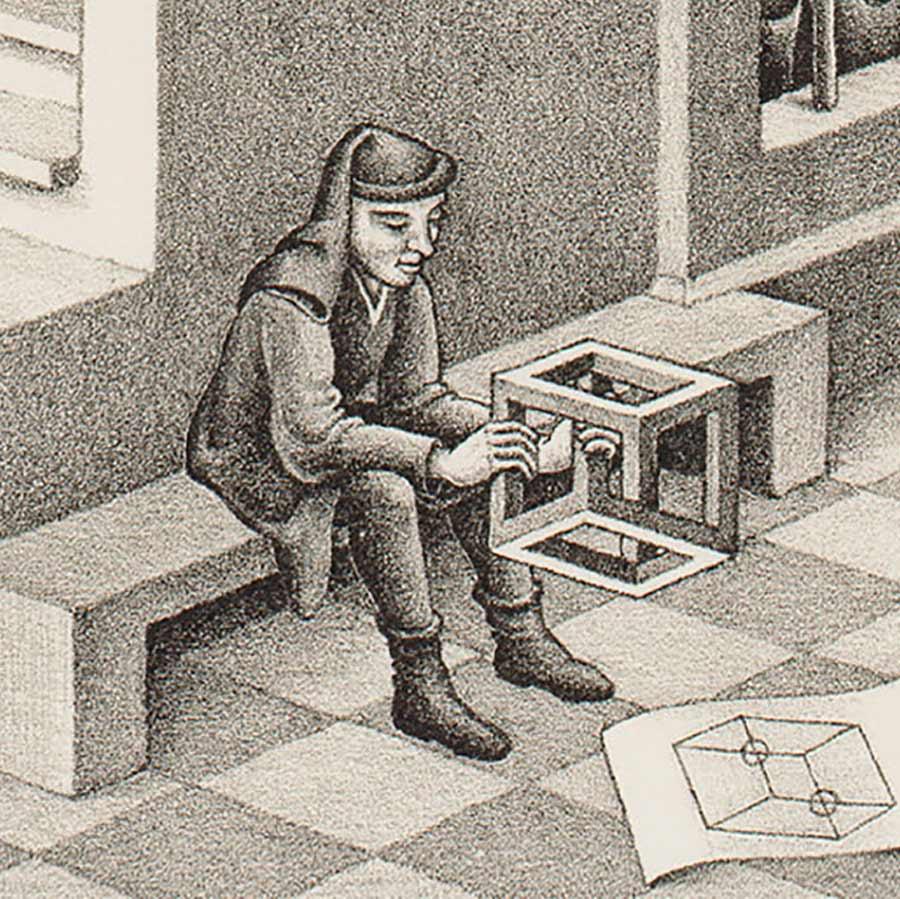

M.C. Escher experimented in various prints with transforming and converging shapes. Early examples of this are Development I (1937) and Development II (1939), Day and Night (1938), Sky and Water I (1938) and II (1938), Verbum (1942) and Metamorphosis I and II (1937 and 1939-1940). In these prints, objects and animals change from one recognisable form to another (transform) or they merge into an end form or end point (converge). He often managed to combine these two principles in a single print, for example in the wood engraving Butterflies from June 1950.
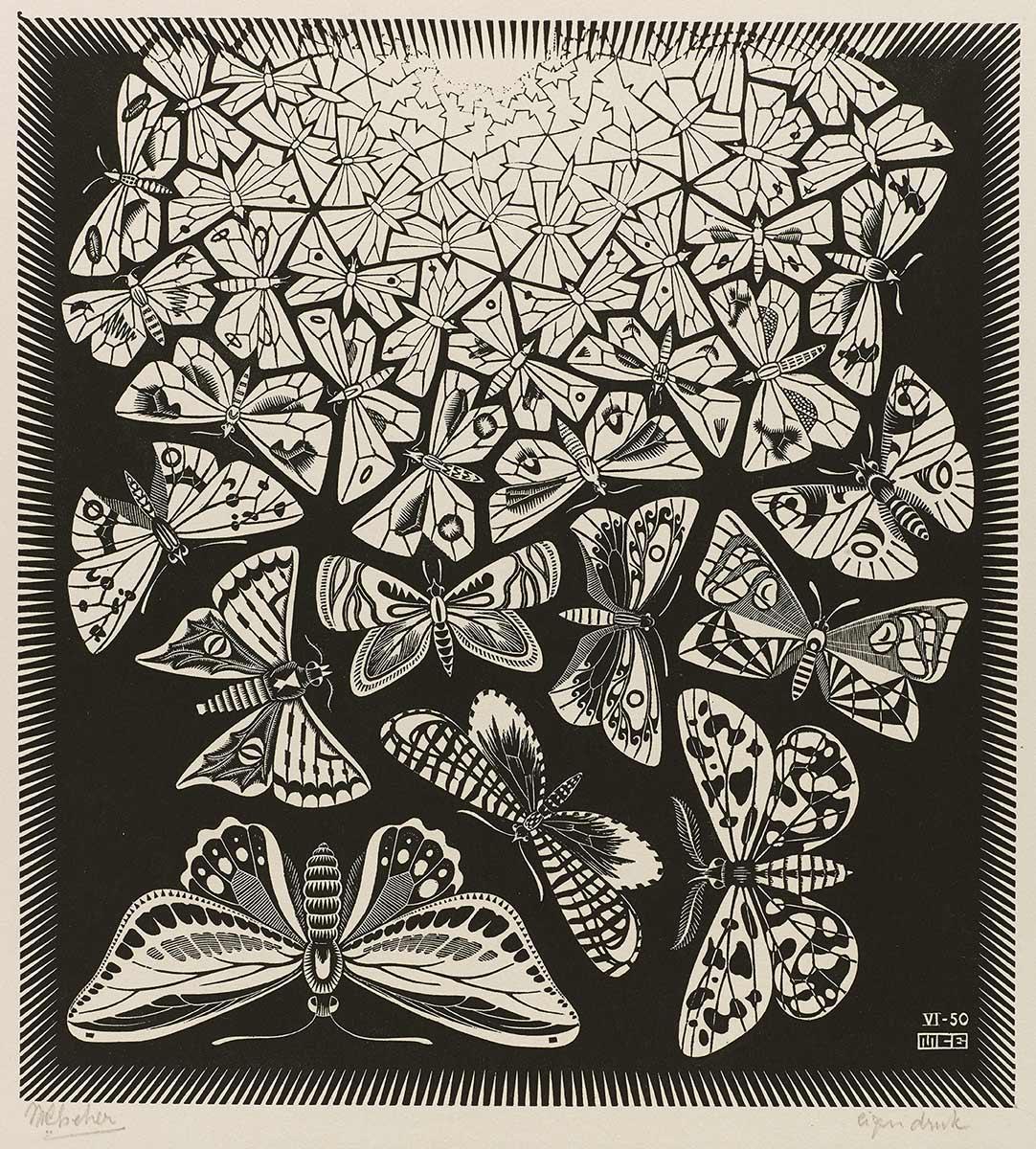
Nevertheless, he had already effected a combination of transformation and convergence in the aforementioned pieces. In Butterflies, Escher endeavoured to infuse the print with character by having the butterflies all differ from each other. He had done this before in the woodcut Sun and Moon (1948), a tessellation of birds that are all different.
What is striking about Butterflies is that the movement of transformation and convergence is limited here. The print is based on a spiral pattern in which the changes take place along a curved line. The most logical form in this regard is a circle or a square, where the spirals run from the centre to the edge in all directions. In Butterflies it seems as if he has only depicted a fragment of the overall shape. It would be interesting to see what that print would look like if the transformation were to take place in all directions. He would go on to perfect this spiral shape in the prints Path of Life I (1958), II (1958) and III (1966). Key to these path of life prints is the growth from infinitely small to large and back to infinitely small.
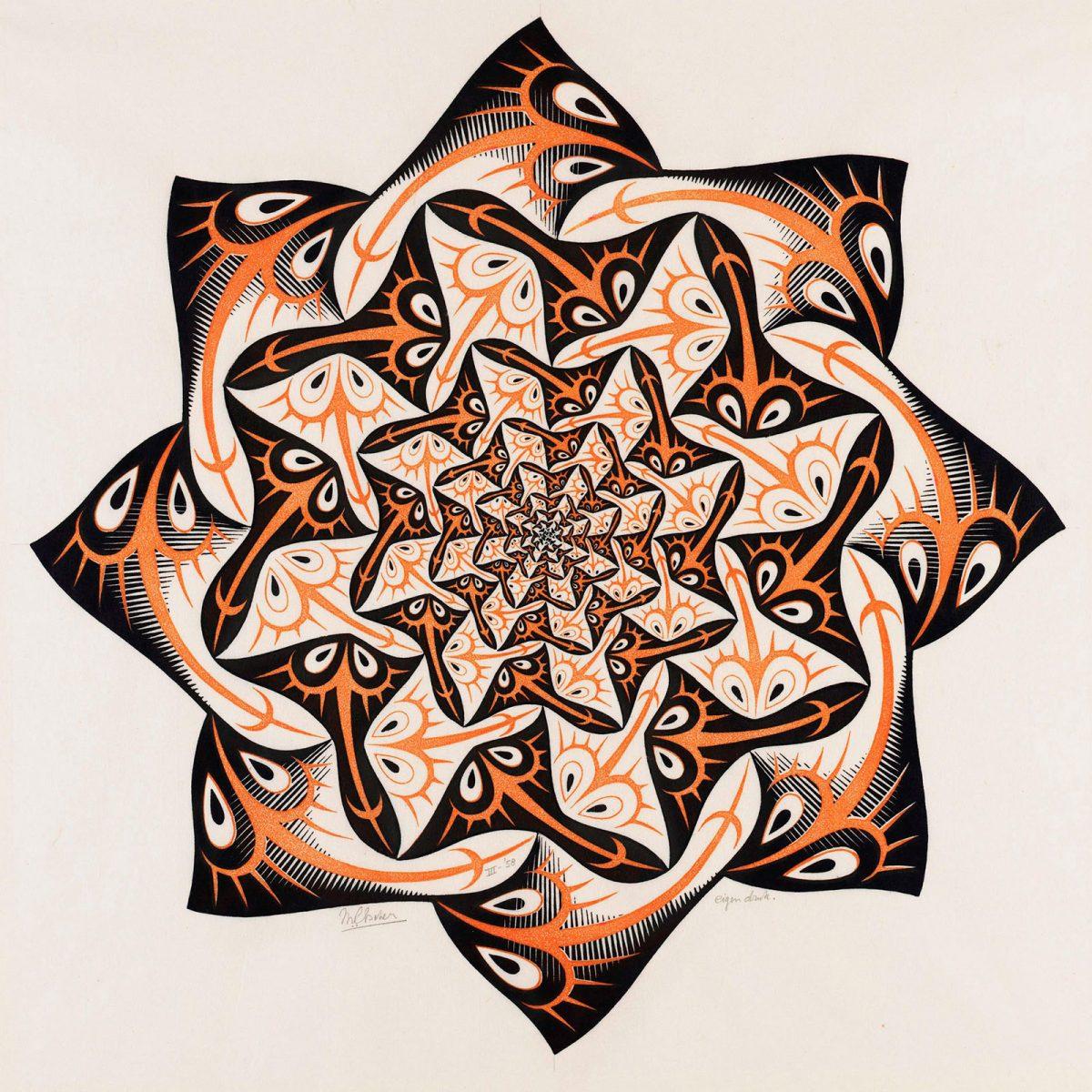
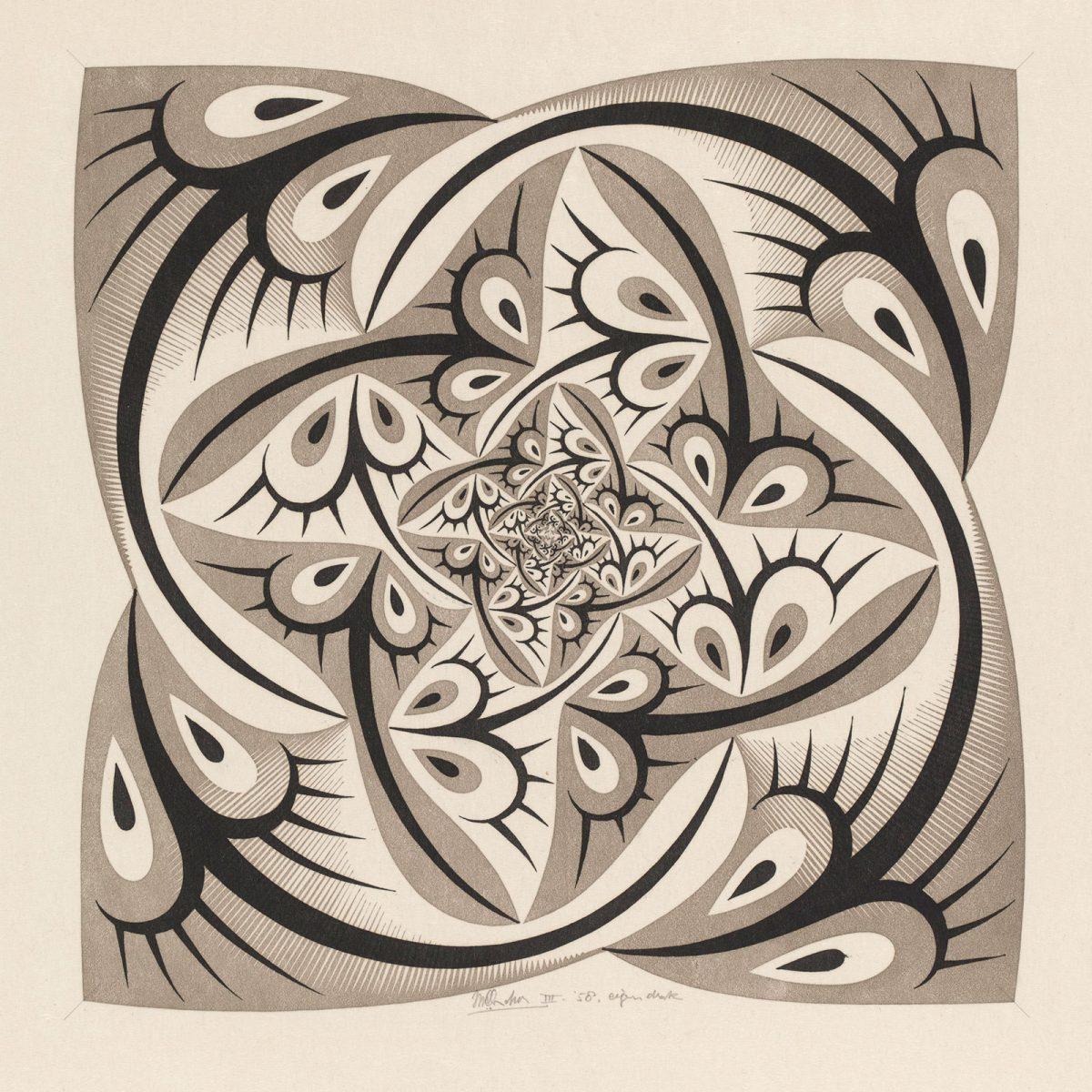
Escher explored working with curved lines in more detail in Up and Down (1947) and House of Stairs (1951). Here the perspective lines are bent and he uses multiple vanishing points. In 1956 this led to his masterpiece Print Gallery, in which sight lines and perspectives terminate in a white surface along a dizzying spiral.
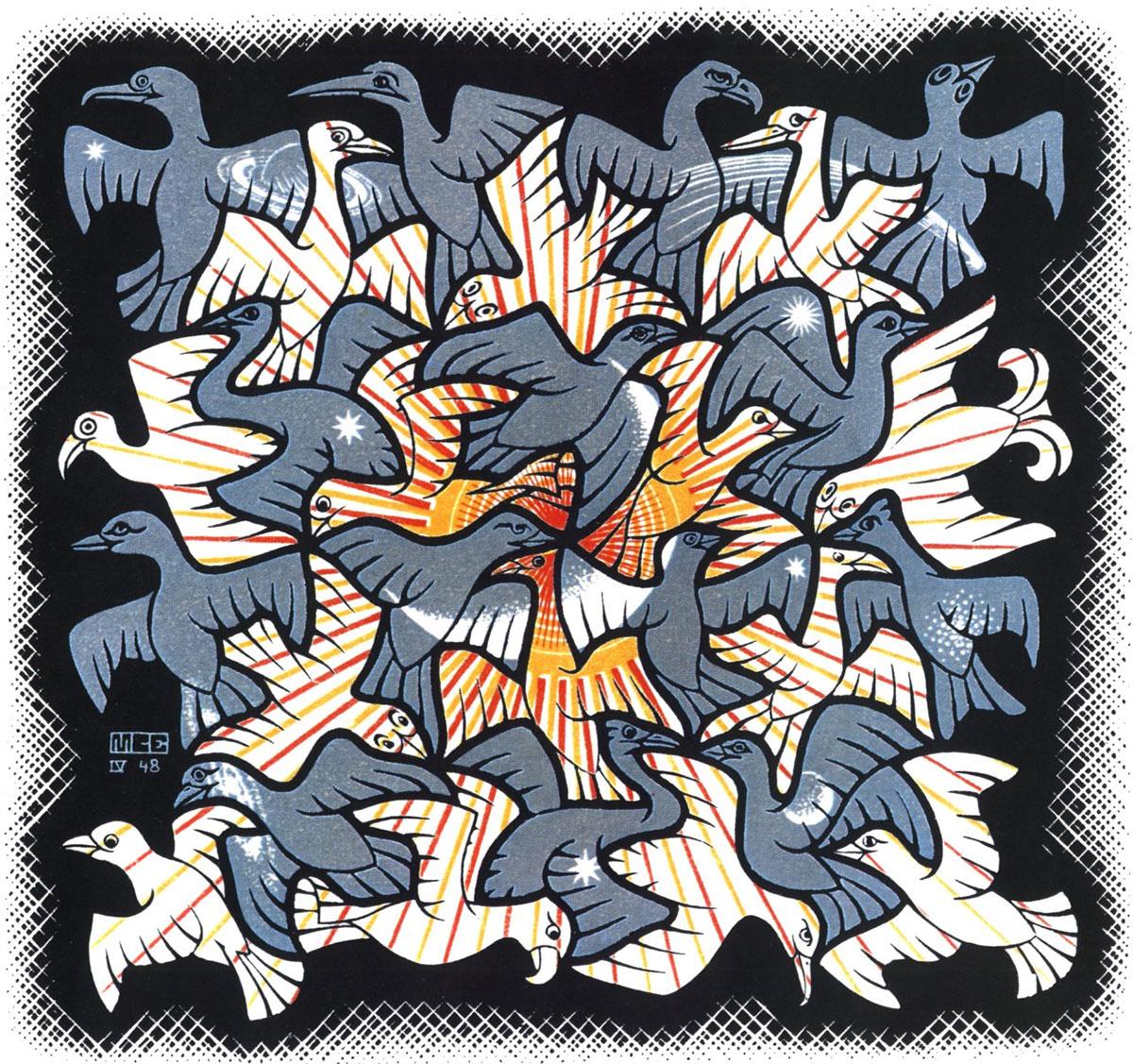
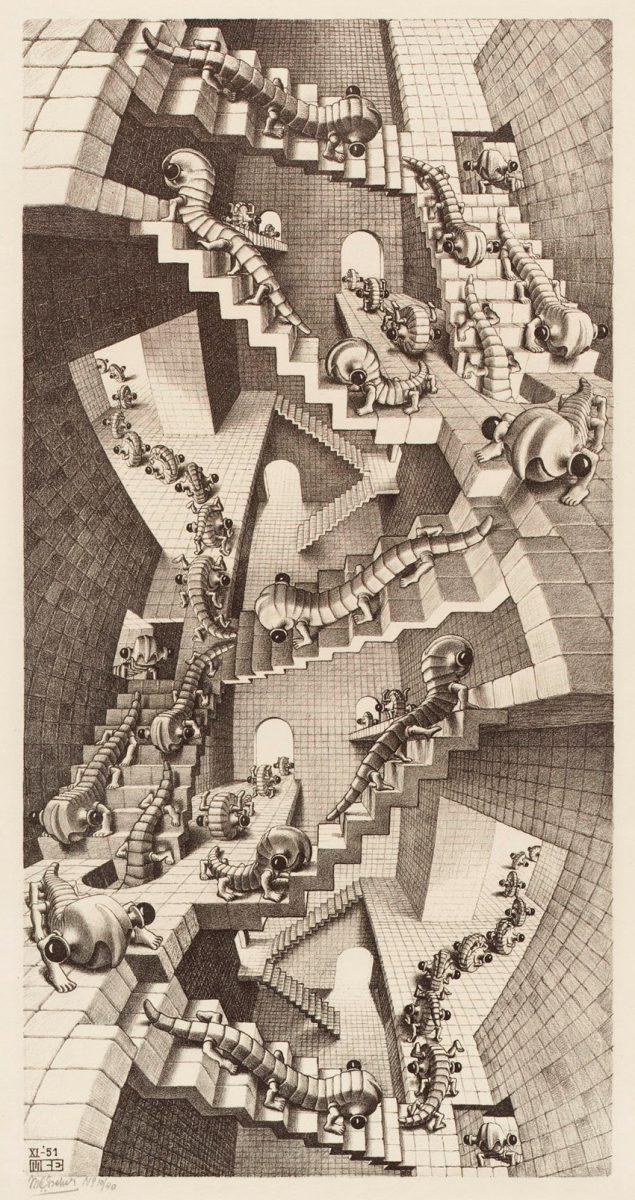
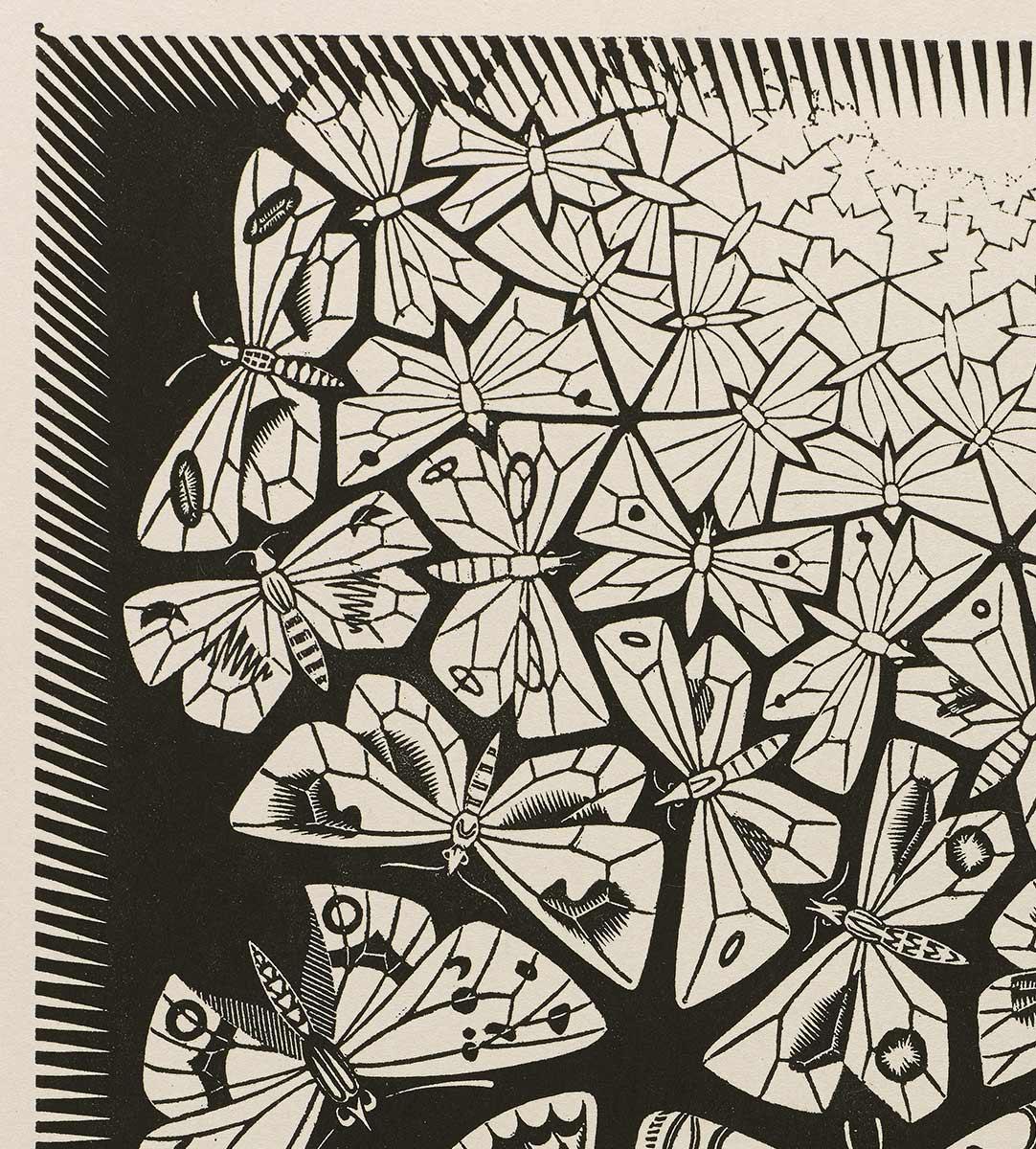
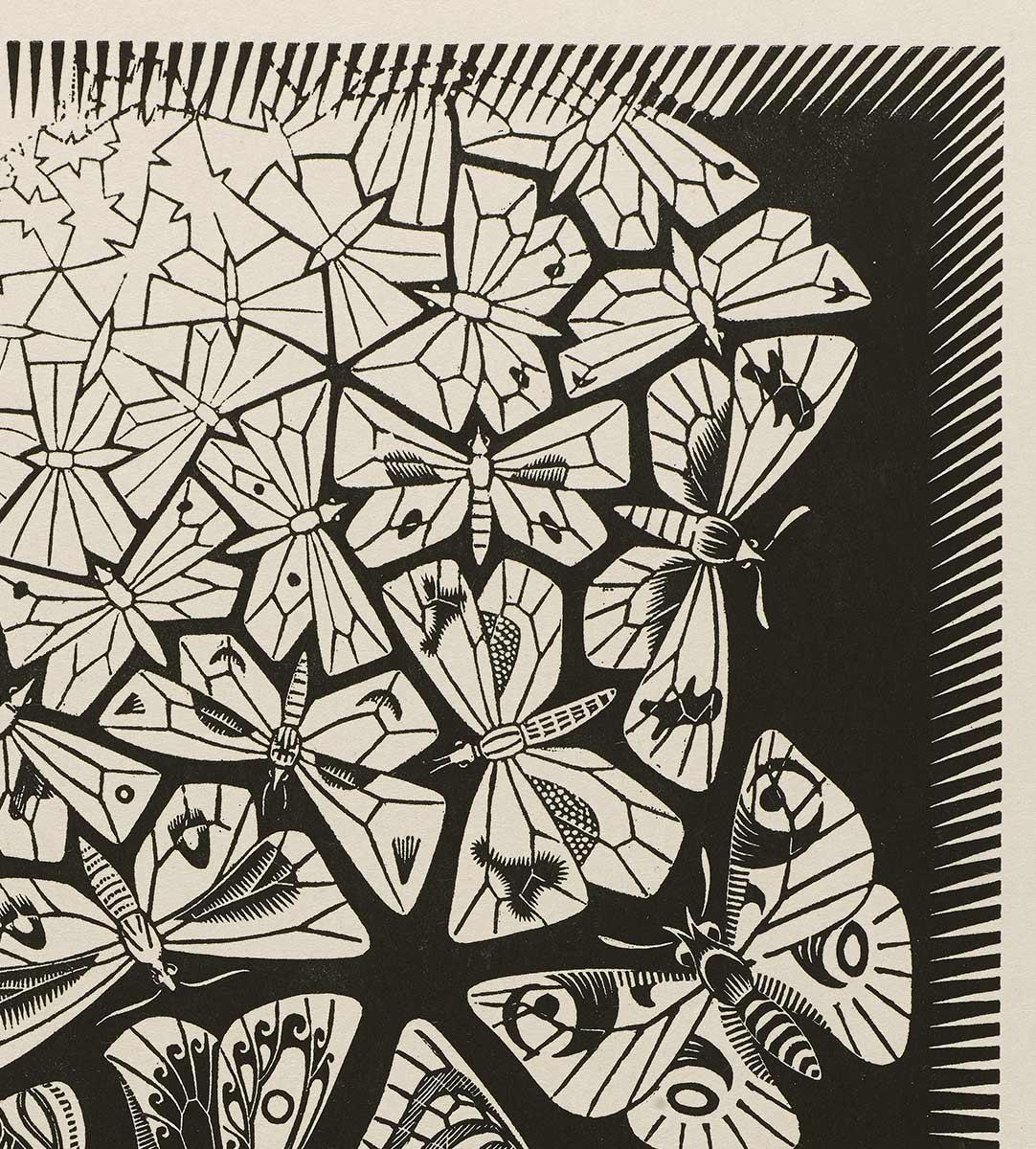
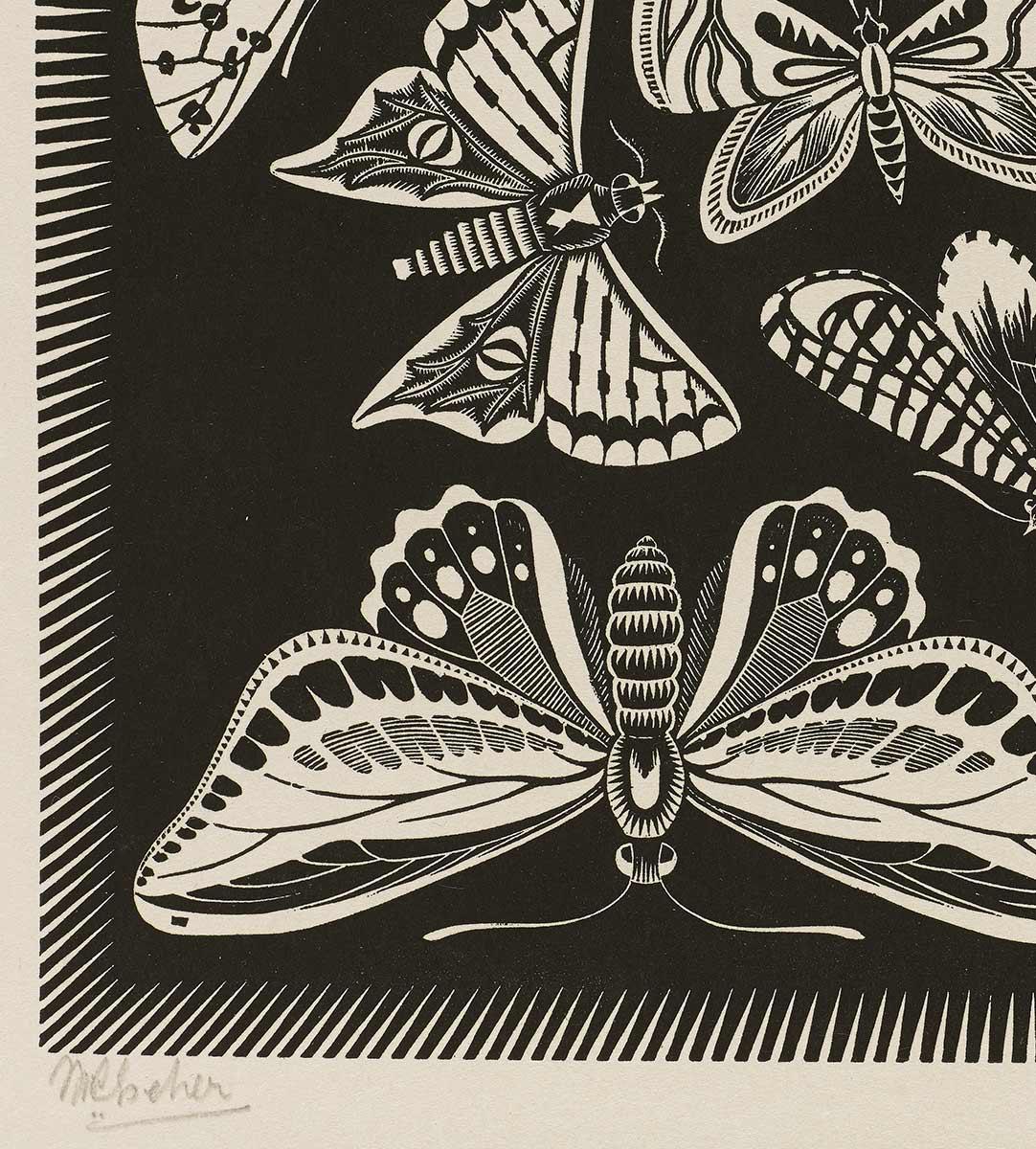
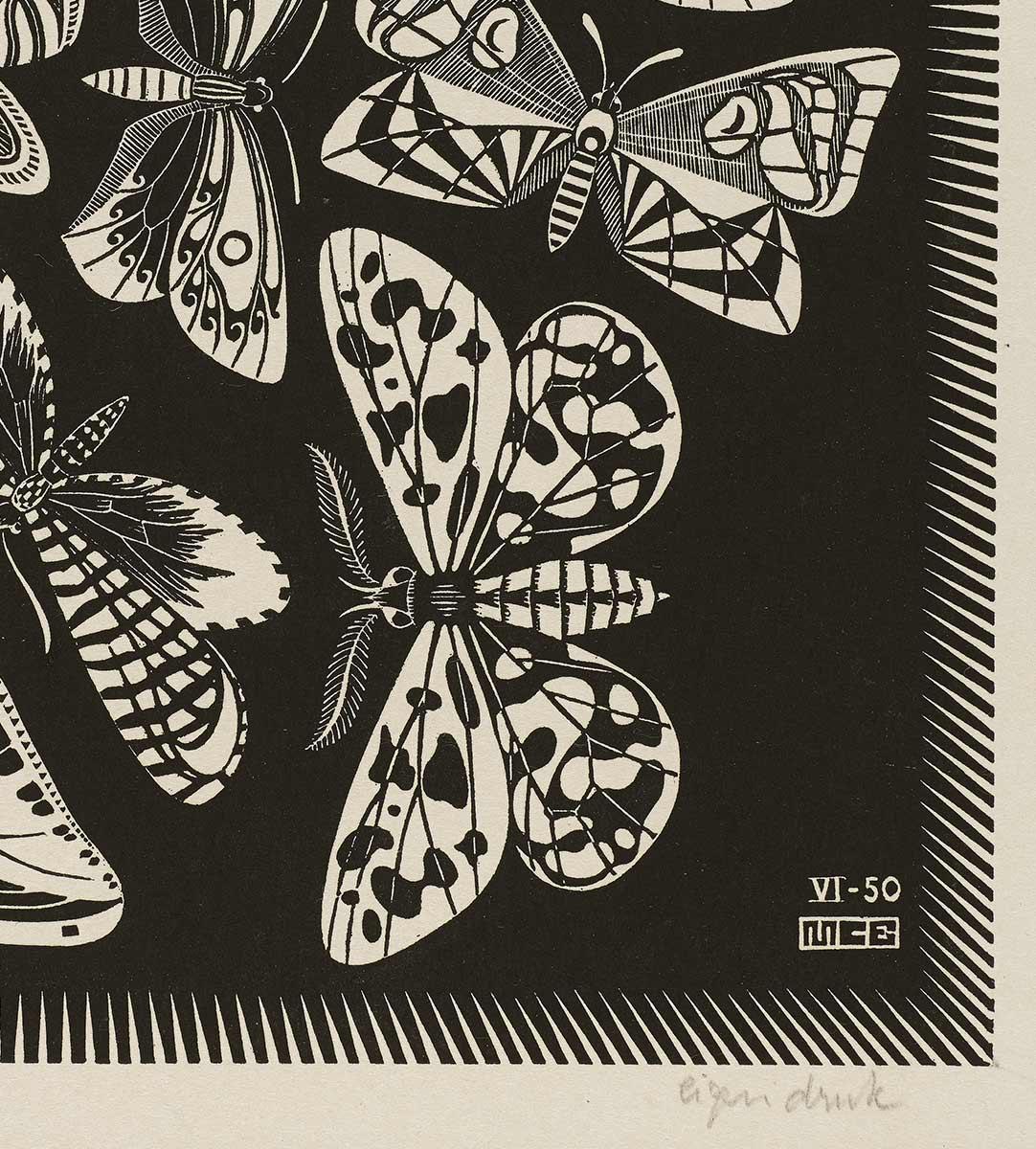
Source
[*] The Magic Mirror of M.C. Escher, Bruno Ernst, Taschen, 1976/2018, page 107
More Escher today

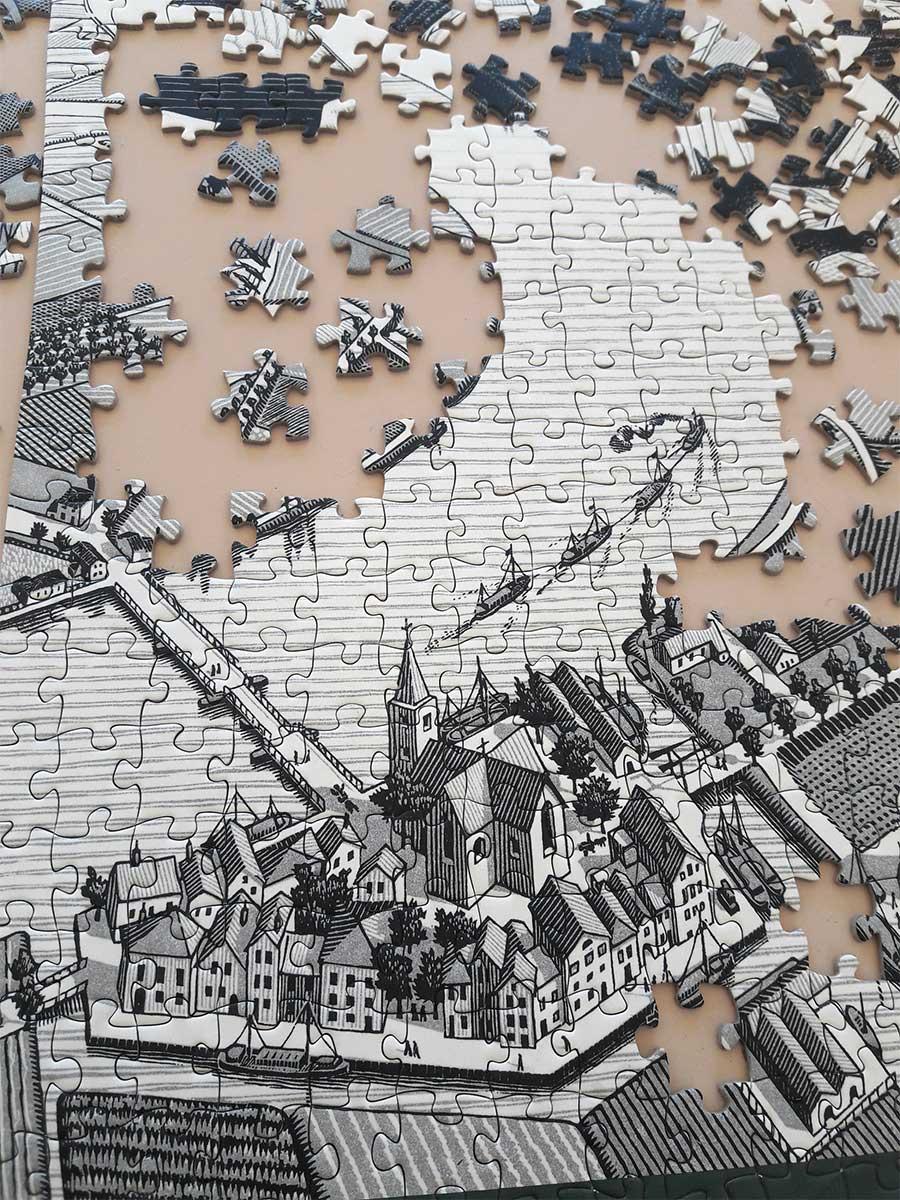
Playing with puzzles
